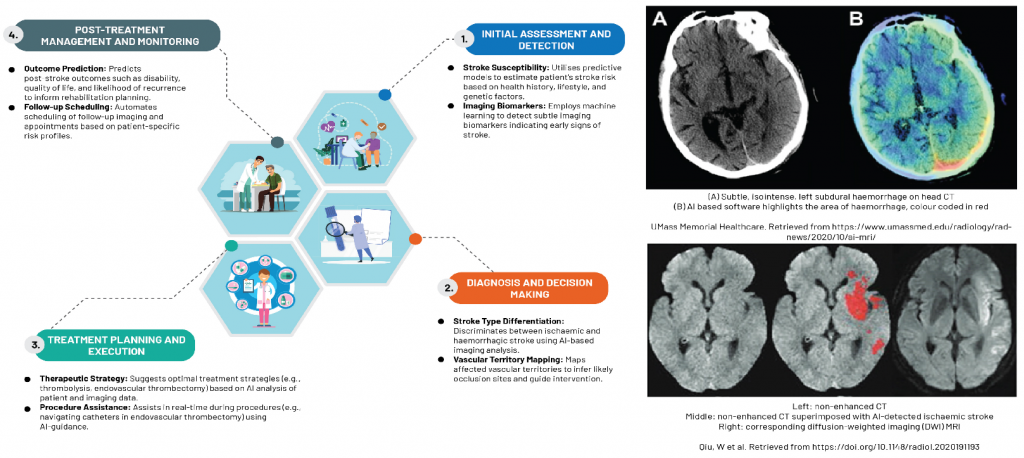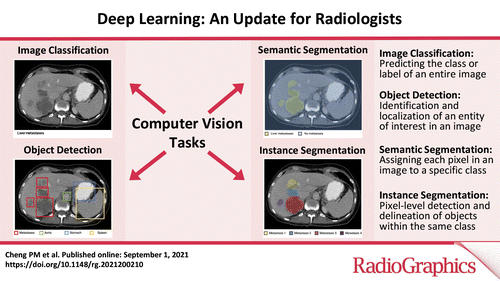Nakul Tyagi, Assistant professor, MRIT, Sushant University
Learning is a never-ending process, especially in the field of radiology, where advancements occur at a rapid pace. As I delve deeper into radiology, I find myself constantly amazed by the evolving technologies, new imaging techniques, and their applications in patient care. This ongoing journey of acquiring knowledge not only enhances my understanding of the subject but also highlights the significant role that artificial intelligence (AI) is playing in shaping the future of medical imaging.
The Ever-Evolving World of Radiology
Radiology is an indispensable part of modern medicine. It provides detailed insights into the human body, aiding in the diagnosis and treatment of diseases. From conventional X-rays to advanced imaging modalities like MRI, CT, and PET-CT, the field has seen remarkable progress over the years. Recently, I had the opportunity to explore some new aspects of radiology that further expanded my knowledge.
Recent Learnings in Radiology
-
PET-CT Imaging and Its Applications PET-CT scans combine positron emission tomography (PET) and computed tomography (CT) to provide detailed metabolic and anatomical information. This hybrid imaging technique is particularly useful in oncology, neurology, and cardiology. The ability to detect metabolic changes at the cellular level before structural changes become apparent makes PET-CT a powerful diagnostic tool.
-
Dual-Energy X-ray Absorptiometry (DEXA) DEXA is a specialized technique used for measuring bone mineral density (BMD). It is widely employed in diagnosing osteoporosis and assessing fracture risk. Understanding the principles and applications of DEXA has deepened my appreciation for the role of radiology in preventive healthcare.
-
Tomosynthesis: The Next Step in Mammography
Digital breast tomosynthesis (DBT), or 3D mammography, is a revolutionary advancement in breast imaging. Unlike traditional mammography, DBT captures multiple images from different angles, allowing for better visualization of breast tissue and improving cancer detection rates while reducing false positives. -
Advancements in MRI and Its Expanding Role
The advent of higher-resolution MRI techniques, functional MRI (fMRI), and diffusion tensor imaging (DTI) has significantly enhanced the ability to study brain function, neurological disorders, and musculoskeletal conditions. AI is playing an instrumental role in improving MRI interpretation and reducing scan times.
As I absorb more information and refine my understanding of these imaging techniques, I cannot overlook the undeniable impact AI is having on the field of radiology.
The Role of AI in Advancing Radiology
Artificial intelligence has emerged as a game-changer in radiology, streamlining workflows, improving diagnostic accuracy, and assisting radiologists in making better-informed decisions. AI algorithms are now capable of analyzing medical images with remarkable precision, sometimes even surpassing human performance in specific tasks.
Key Contributions of AI in Radiology
-
-
Automated Image Analysis and Interpretation
AI-powered tools are capable of detecting abnormalities in medical images with high accuracy. For instance, deep learning models can identify lung nodules in CT scans, classify breast lesions in mammograms, and detect fractures in X-rays. These advancements help radiologists prioritize critical cases and improve early disease detection. -
Reducing Radiologist Burnout
With the increasing demand for imaging studies, radiologists often face overwhelming workloads. AI-driven automation assists by handling routine and repetitive tasks, allowing radiologists to focus on complex cases and clinical decision-making. This not only enhances efficiency but also reduces fatigue and diagnostic errors. -
Enhancing PET-CT and MRI Analysis
AI algorithms are improving the interpretation of PET-CT and MRI scans by refining image quality, reducing noise, and facilitating faster reconstructions. AI-driven segmentation tools help in delineating tumor boundaries, assessing treatment response, and monitoring disease progression.
-

-
AI in Ultrasound Imaging
AI is also making strides in ultrasound imaging by enhancing real-time image acquisition and interpretation. Automated analysis of fetal ultrasound scans, thyroid nodules, and cardiac imaging has shown promising results, leading to more consistent and objective diagnoses. -
Predictive Analytics and Personalized Medicine
AI is not just about diagnosing diseases; it is also playing a vital role in predicting disease outcomes and personalizing treatment plans. By analyzing large datasets, AI can identify patterns that may not be immediately apparent to human observers. This predictive capability is particularly beneficial in oncology, where AI can assess tumor progression and suggest personalized therapeutic approaches.
Challenges and Ethical Considerations
Despite its immense potential, the integration of AI in radiology comes with challenges.
-
Data Privacy and Security:
Ensuring patient data confidentiality is crucial when using AI-driven cloud-based platforms. - Regulatory Approvals:
AI algorithms must undergo rigorous validation and regulatory scrutiny before clinical implementation.
-
Radiologist-AI Collaboration:
AI should be seen as an assistive tool rather than a replacement for radiologists. Human expertise remains essential in clinical decision-making and patient interactions.

The Future of AI in Radiology: A Synergistic Approach
The future of radiology lies in the seamless integration of AI with human expertise. Instead of replacing radiologists, AI is enhancing their capabilities, allowing them to work more efficiently and accurately. The next few years will likely witness further advancements in AI-driven imaging, such as:
- AI-powered real-time image enhancement for better visualization of anatomical structures.
- Deep learning models for differential diagnosis, helping radiologists distinguish between similar-looking pathologies.
- AI-assisted interventional radiology, aiding in image-guided procedures and robotic-assisted interventions.
- Integration of radiomics and genomics, combining imaging and genetic data for a more holistic approach to precision medicine.
Final Thoughts
My recent learnings in radiology have been both exciting and enlightening, reinforcing my appreciation for this dynamic field. The evolution of imaging techniques and the integration of AI are transforming how we approach medical diagnosis and treatment. As AI continues to refine radiological workflows, it is crucial to embrace these advancements while maintaining the essential role of human expertise in patient care.
The synergy between AI and radiologists will define the future of medical imaging, improving accuracy, efficiency, and overall healthcare outcomes. As I continue my journey in radiology, I look forward to exploring more innovations and understanding how AI-driven technologies will shape the next generation of imaging practices.
